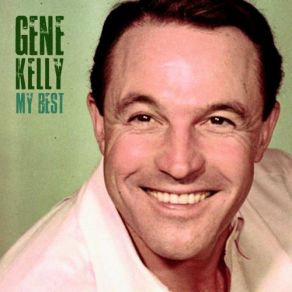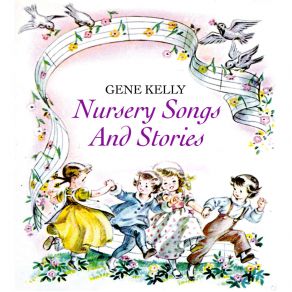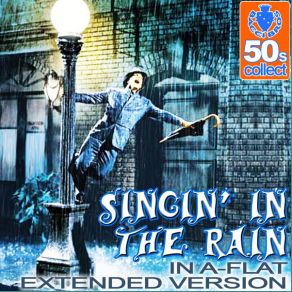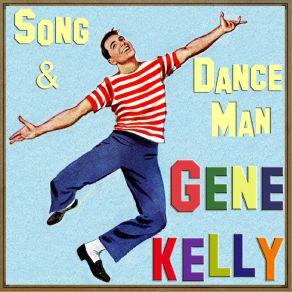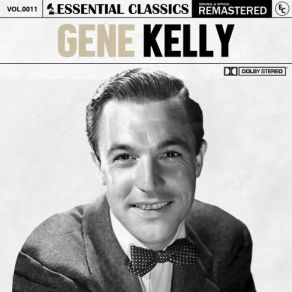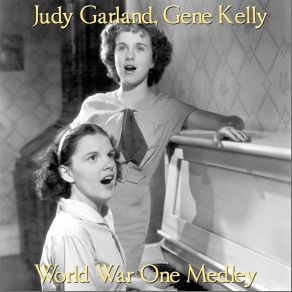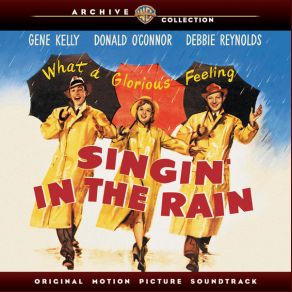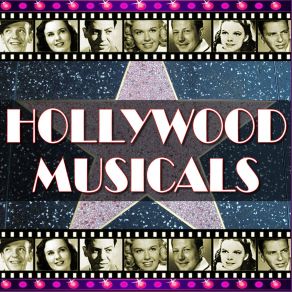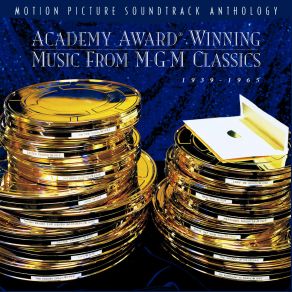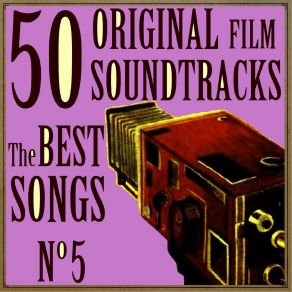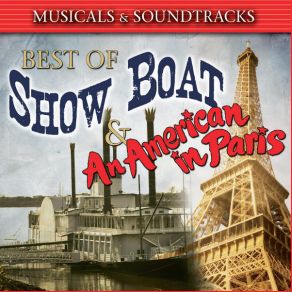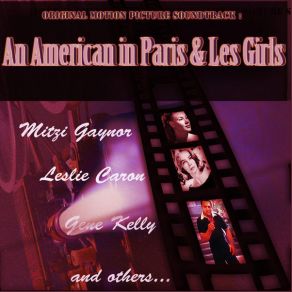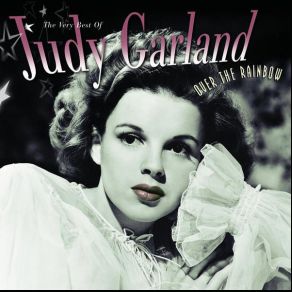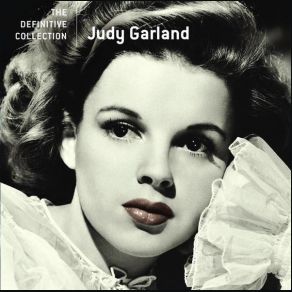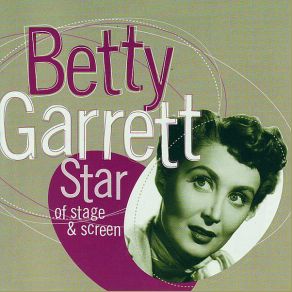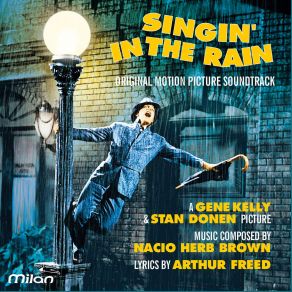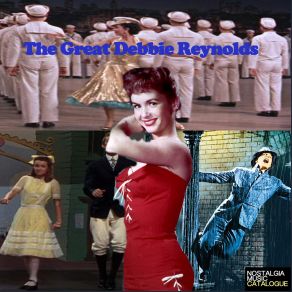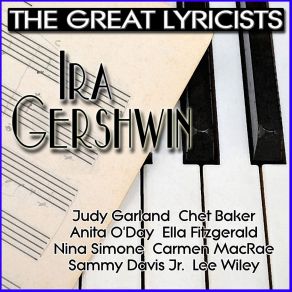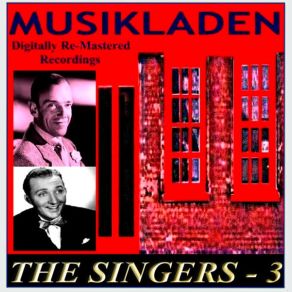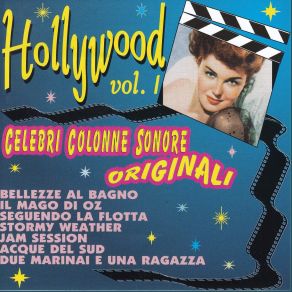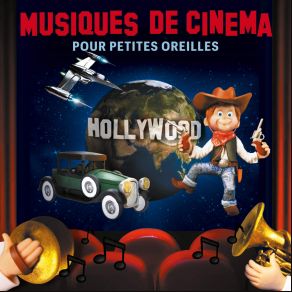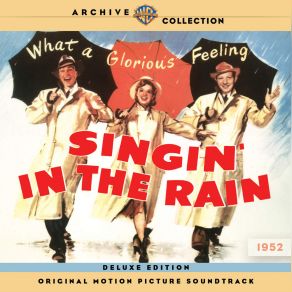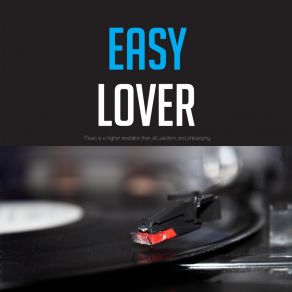Gene Kelly
Wikimp3 information about the music of Gene Kelly. On our website we have 64 albums and 70 collections of artist Gene Kelly. You can find useful information and download songs of this artist. We also know that Gene Kelly represents Theatre/Soundtrack genres.
Biography
[Edit]Gene Kelly was never very popular as a singer, even though he did cut records and was seen in movie roles in which he sang — rather, it was his work onscreen as a dancer, choreographer, and director that allowed him to exert a key influence over the popularity of certain song catalogs in the mid-20th century. Showing an early aptitude in both gymnastics and dance, Eugene Curran Kelly, as he was named at birth, had devoured, by his early teens, everything he could about dance in general and ballet in particular. He was already a successful dance teacher in his hometown of Pittsburgh when he began his ascent in the original Broadway production of Richard Rodgers' and Lorenz Hart's Pal Joey. This led to a film contract with David O. Selznick, which was sold to MGM before Kelly even reported to Hollywood. The allegiance with MGM proved a godsend for both the studio and Kelly, who (with the help of producer Arthur Freed) began a process of energizing the film company's musical output for the next 15 years. The studio had been doing notable musicals almost since the dawn of sound, going back to the original 1929 musical comedy/drama The Broadway Melody, and was gradually moving — under the guidance of Freed and the people with whom he surrounded himself — to the next level; by the time Kelly arrived, the "Broadway Melody" series of movies had seen their day, and the rapidly maturing presences of Judy Garland and Mickey Rooney would soon bring a halt to their cycle of youth-oriented musicals built around standardized formulas and the two young stars' seemingly boundless enthusiasm.
Kelly was initially cast alongside Garland in For Me and My Gal, a safe, period musical coming out of a vaudeville setting and tradition, and in his next screen appearance, starring in Thousands Cheer (1943), he carried the movie, an adult version of the Garland/Rooney-style "hey kids, let's put on a show" vehicle. But by the mid-'40s, MGM was starting to do somewhat more diverse musicals, which were mounted on an ever-grander scale and used much larger budgets; not all of these were successful, including those in which Kelly worked — their version of Cole Porter's Du Barry Was a Lady was hopelessly compromised by the studio's dampening down of most of the stage original's more daring elements. But in the midst of all of this activity (which included a loan-out to Columbia Pictures for Cover Girl, a musical that was more ambitious than any of his MGM films to date), Kelly revealed himself to be a quintuple threat: dancer, actor, singer, choreographer, and director. Anchors Aweigh put Kelly alongside a young Frank Sinatra but it also gave him a bravura dance segment involving live action and animation mixed together, all in Technicolor, in which his dancing partner was Jerry the Mouse from the Tom & Jerry cartoons.
As Kelly's popularity and box office grosses grew, so did his influence at the studio, and he began proposing more ambitious projects as a director as well as a choreographer and performer. And there were other activities taking place at MGM in the post-World War II era that utilized additional aspects of his talent — when MGM started its record label in 1948, there was a Gene Kelly album, Song & Dance Man, included among its earliest releases. And he did, in those days in his movies, share some vocals with the likes of a young Frank Sinatra — and acquitted himself decently — but it was the dancing and choreography that were the real focus of his work. It was in the big musicals conceived near the end of the '40s — starting with On the Town, adapted from the hit stage musical by Betty Comden, Adolph Green and Leonard Bernstein — and his later, more personalized vehicles, An American in Paris and Singin' in the Rain, that gave Kelly his greatest influence over music. By that time, his vocal range had narrowed somewhat from the pleasing light tenor he'd revealed in For Me and My Gal a decade earlier, but his onscreen geniality and overall popularity allowed him to effectively re-popularize many songs by George and Ira Gershwin, and Arthur Freed and Nacio Herb Brown. His most popular and influential work as a singer can also be found on the soundtracks for those films — although it was the films themselves, and the arrangements and visual set pieces (which Kelly had a lot to do with shaping, even when he didn't have co-directing credit, as on An American in Paris), that did more for the songs than his vocalizing. One can also add to that list the soundtracks to Brigadoon, Summer Stock, and the compilation soundtrack That's Entertainment! The Best of the M-G-M Musicals. Rather ironically, his singing on Brigadoon wasn't all that good — and dangerously close to ragged at times — but the soundtrack was around for years and it was through the movie that most people came to know the score after the show's original Broadway run.
Alas, Kelly's time in the limelight was relatively brief, not quite 20 years in terms of his actual output. He'd come along on the eve of the studio's ascent to its peak of production in his particular area of expertise (and, in many ways, helped make the achievement of that peak possible); but it was a short time, only a decade, before the arrival of television began reducing movie audiences, and the rise of the teenage filmgoer fundamentally changed the nature of who went to movies, and all production at MGM began getting scaled back. By 1955, the film musical — especially as it was done at MGM — was a dying art form commercially, and Kelly turned increasingly toward directing, but those assignments were relatively few and far between, and he allowed his dramatic acting — which he had never entirely forsaken, but had never built into great prominence before the public either — to become the focus of his film work in movies such as Marjorie Morningstar and Inherit the Wind. He proved to be as adept at drama as he had been at dance; and in the '70s, spurred on by the growing interest in America's cinematic past that coalesced around MGM's compilation feature That's Entertainment!, Kelly directed the equally fine follow-up, That's Entertainment, Part 2. But for all of his aspirations as a director, his best movie work of the post- MGM era was probably in the Jacques Demy-directed Young Girls of Rochefort; although Demy's focus was song and melody rather than dance, he succeeded in creating a popular new musical idiom for the '60s outside of Hollywood, where Kelly never really had the proper chance to try, and invested himself instead in gargantuan productions such as Hello, Dolly. Instead, as on That's Entertainment, Part 2, he had to content himself with preserving and working within the context of his own past.
Title: You Are My Lucky Star (From "Singing in the Rain") (Remastered) - Single
Artist: Gene Kelly, Debbie Reynolds
Genre: Pop
Title: Summer Stock (Original Soundtrack Recording)
Artist: Gene Kelly, Pete Roberts, Judy Garland, Gloria De Haven
Genre: Theatre/Soundtrack
Title: Gene Kelly’s Centenary / Gene Kelly's Centenary
Artist: Gene Kelly
Genre: Rock, Pop, Theatre/Soundtrack
Title: Gene Kelly Double Bill: Singing In the Rain / An American In Paris
Artist: Gene Kelly
Genre: Theatre/Soundtrack
Title: An American in Paris (O.S.T - 1951)
Artist: Gene Kelly, Georges Guetary
Genre: Theatre/Soundtrack
Title: Marjorie Morningstar (Original Soundtrack) [feat. Natalie Wood]
Artist: Gene Kelly
Genre: Theatre/Soundtrack
Title: Old Time Irish Music in America
Artist: Gene Kelly
Genre: World Music, Songwriter/Lyricist, Folk
Title: S' Wonderful (From "An American in Paris") [Remastered] - Single
Artist: Gene Kelly
Genre: Pop
Title: Singin' in the rain (Digitally Remastered) - Single
Artist: Gene Kelly
Genre: Pop, Theatre/Soundtrack
Title: Singin' In The Rain (In A-Flat) (Digitally Remastered) - Single
Artist: Gene Kelly
Genre: Pop
Title: Singin'in the Rain (Original Soudtrack from ''Clockwork Orange'') - Single
Artist: Gene Kelly
Genre: Pop
Title: Singin' In The Rain (Radio Broadcast) (Digitally Remastered) - Single
Artist: Gene Kelly
Genre: Pop
Title: Singing in the Rain (From "Singing in the Rain") (Remastered) - Single
Artist: Gene Kelly
Genre: Pop
Title: Singing In The Rain (In A-Flat) (Digitally Remastered) - Single
Artist: Gene Kelly
Genre: Pop
Title: Singing In The Rain (Radio Broadcast) (Digitally Remastered) - Single
Artist: Gene Kelly
Genre: Pop
Title: Yankee Doodle Dandy (From "Yankee Doodle Dandy") (Remastered) - Single
Artist: Gene Kelly
Genre: Pop
Title: For Me and My Gal (Remastered) - Single
Artist: Gene Kelly, Judy Garland
Genre: Pop, Theatre/Soundtrack
Title: Singin' in the Rain / Easter Parade (Original Recording)
Artist: Gene Kelly, Judy Garland
Genre: Theatre/Soundtrack
Title: Singin' in the Rain (Remastered) - Single
Artist: Gene Kelly, Judy Garland
Genre: Pop, Theatre/Soundtrack
Artist: Gene Kelly, Judy Garland
Genre: Theatre/Soundtrack
Collections
Title: Original Hits: Singers of All Times
Genre: Jazz
Title: The Greatest St. Valentines Day Love Songs, Vol. 10
Genre: Pop
Title: 100 Original Soundtracks, Hollywood Vol 1
Genre: Theatre/Soundtrack
Title: Vintage Hollywood Classics
Genre: Jazz
Title: 100 Hits Vintage Nº4 / 100 Hits Vintage N?4
Genre: Pop
Title: The 100 Best Songs Vintage Vocal Jazz
Genre: Jazz
Title: Legendary Films Best Recordings
Genre: Theatre/Soundtrack
Title: Vintage Hollywood Classics, Vol. 2
Genre: Theatre/Soundtrack
Title: Broadway Golden Hits
Genre: Theatre/Soundtrack
Title: Hollywood Musicals
Genre: Theatre/Soundtrack
Title: 100 Original Soundtracks, Hollywood Vol 2
Genre: Theatre/Soundtrack
Title: Vintage Hollywood Classics, Vol. 4
Genre: Theatre/Soundtrack
Title: Swing Jazz Hollywood Style
Genre: Jazz
Title: 100 Hits Vintage Nº1 / 100 Hits Vintage N?1
Genre: Pop
Title: Triple Threat (Music & Film Stars)
Genre: Theatre/Soundtrack
Title: 100 Hits: Essential 30s & 40s Classics
Genre: Pop
Title: Retro Songs
Genre: Pop
Title: Lili Marlene: 20 Classics From The Forties
Genre:
Title: 100 Songs for Romantic Dinner
Genre: Jazz
Title: Old Time Rock and Roll - 28 Orginal Artists
Genre: Rock
Title: Triple Threat: Music / Film Stars, Vol. 2
Genre: Theatre/Soundtrack
Title: Hollywood Gold
Genre: Pop
Title: Great Moments of the Movies
Genre: Pop
Title: The Golden Age of Hollywood
Genre: Pop, Theatre/Soundtrack
Title: Discover 50s Crooners
Genre:
Title: 100 Vintage Love Songs
Genre: Pop
Title: 100 Hits Vintage Nº 3 / 100 Hits Vintage N? 3
Genre: Pop
Title: 100 Hits Vintage Nº2 / 100 Hits Vintage N?2
Genre: Pop
Title: Hollywood,Vol. 1
Genre: Theatre/Soundtrack
Title: Those Great Movie Songs
Genre: Pop
Title: Golden Oldies Vol 3
Genre: Pop
Title: Ziegfeld Follies (Original Motion Picture Soundtrack)
Genre: Pop
Title: Wonderful Vintage Duets
Genre: Jazz
Title: Magical Memories
Genre:
Title: American Movie Greats, Vol. 2
Genre: Pop, Theatre/Soundtrack
Title: The Essential George Gershwin
Genre: Pop, Theatre/Soundtrack
Title: Best of Show Boat & an American In Paris
Genre: Pop, Theatre/Soundtrack
Title: Hollywood Melodies
Genre: Theatre/Soundtrack
Title: Last of the Romantics
Genre:
Title: Original Soundtracks Hollywood 40's
Genre: Theatre/Soundtrack
Title: Broadway Musicals
Genre: Theatre/Soundtrack
Title: It's Always Fair Weather (O.S.T - 1955)
Genre: Theatre/Soundtrack
Title: Hollywood Musical
Genre: Theatre/Soundtrack
Title: Classic Cinematic Music
Genre: Theatre/Soundtrack
Featuring albums
Title: Over the Rainbow: The Very Best of Judy Garland
Artist: Judy Garland
Genre: Jazz, Vocal Jazz, Pop, Theatre/Soundtrack
Title: 20th Century Masters - The Millennium Collection: The Best of Judy Garland
Artist: Judy Garland
Genre: Pop
Title: The Musical Greats of Hollywood and Broadway Vol. 1
Artist: Various Artists
Genre: Theatre/Soundtrack, Vocal & Symphonic
Title: Hollywood, Vol. 1 (Celebri colonne sonore originali)
Artist: Various Original Artist
Genre: Pop
Title: Musiques de cinema pour petites oreilles
Artist: Jean-François Alexandre / Jean-Francois Alexandre
Genre: Kids
Title: 20th Century Masters: The Millennium Collection: Best Of Judy Garland
Artist: Judy Garland
Genre: Pop
Title: Irish Traditional Music in America: The East Coast
Artist: Various Artists
Genre: World Music, Celtic, Folk
Title: Singin' in the Rain (Original Motion Picture Soundtrack)
Artist: Various Artists
Genre: Theatre/Soundtrack
Title: An American In Paris (Original Motion Picture Soundtrack)
Artist: Various Artists
Genre: Theatre/Soundtrack
Title: Soundtracks, Voices and Themes from Great Movies
Artist: Various Artists
Genre: Theatre/Soundtrack
Title: The Intern (Original Motion Picture Soundtrack)
Artist: Various Artists
Genre: Theatre/Soundtrack
Title: Xanadu
Artist: Electric Light Orchestra, Olivia Newton - John
Genre: Electronica, Rock, Punk Rock, Disco, Pop, Pop Rock, Theatre/Soundtrack
Title: From The Original Soundtrack - Xanadu
Artist: Electric Light Orchestra, Olivia Newton - John
Genre: Electronica, Theatre/Soundtrack
Title: Singin' in the Rain: Original Motion Picture Soundtrack
Artist: Various Artists
Genre: Theatre/Soundtrack
Title: The Pirate & Easter Parade (Original Soundtrack)
Artist: Various Artists
Genre: Theatre/Soundtrack
Title: Brigadoon (Original Soundtrack of the MGM musical)
Artist: Various Artists
Genre: Theatre/Soundtrack
Title: 20th Century Masters: The Best of Judy Garland Millennium Collection
Artist: Judy Garland
Genre: Pop
Title: Brigadoon (Original Motion Picture Soundtrack)
Artist: Various Artists
Genre: Theatre/Soundtrack
Title: Les Plus Grandes Comédies Musicales Américaines, Vol. 9: Brigadoon
Artist: Фредерик Лоу / Frederik Lou
Genre: Pop























